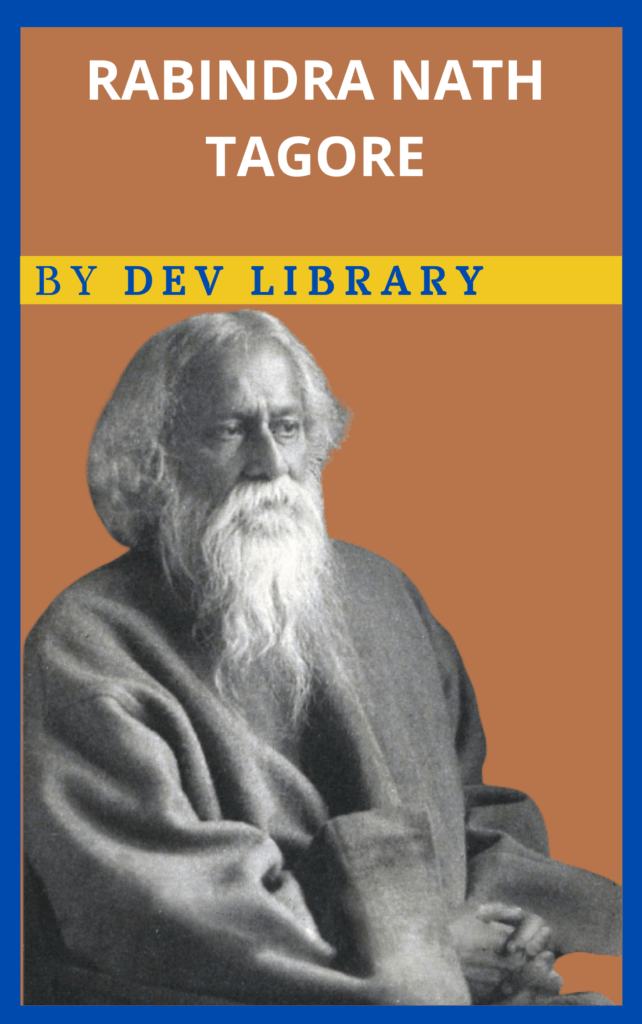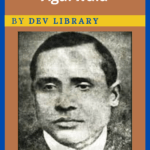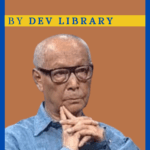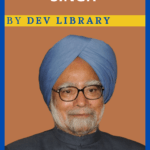Rabindranath Thakur was a Bengali Polymath. The first period of the 20th century from the mid-19th century is known as the Rabindra Yuga of modern Bengali literature. Rabindranath Thakur (Tagore) was a man of versatility. He was a poet, novelist, playwright, lyricist, storyteller, essayist, painter, philosopher, vocalist and actor. Rabindranath Thakur, popularly known as Kobiguru, Biswakobi, or Gurudev, placed India on the world literature map through his skills.

Biography of Rabindranath Thakur (Tagore)
| Name | Rabindranath Thakur |
| Date of Birth | May 7, 1861 |
| Place of Birth | Kolkata, British India |
| Family | Devendranath Thakur (Father), Sarada Devi (Mother), Mrinalini Devi (Wife) |
| Education | 1/ St. Xavier’s School 2/ University of Landan in Bridgton, England |
| Awards | Nobel Prize in Literature in 1913 |
| Date of Death | August 7, 1941 |
Early Life
Rabindranath Thakur was born on May 7, 1861, to the famous Thakur family of Jorahakor in Kolkata. Rabindranath Thakur was the fourteenth child of father Maharishi Devendra Nath Thakur and mother Sarda Sundari Devi with fifteen children. Rabindranath Thakur’s family’s contribution to social, cultural, and literary practices across India is undeniable. Rabindranath Thakur’s grandfather Dwarkanath continued his efforts to end religious evils and build a reformed society. Rabindranath Thakur’s father Devendranath Thakur, on the other hand, also continued his efforts to bring about unprecedented harmony of East-Western culture while trying to bring about reforms in the religious and social sphere.
Rabindranath Thakur was an absolute believer in human unity and also had a deep love for nature. Rabindranath Thakur, the world’s best poet and world thinker, made a simultaneous contribution to Bengali literature and holds a multifaceted talent with 52 poems, 60 plays, 13 novels, and 95 short stories. He made a landmark contribution with 3000 rare paintings, 2000 songs, letters, etc. Importantly, he also composed various songs and poems under the pseudonym Bhanusingh.
Also Read: Biography of Hiren Bhattacharya
Literary Life
Rabindranath Thakur Aristocracy, Influence of Rishipita Devendranath Thakur, Indigenous Attitude, Grew up in a sense of restrained beauty and craft. The family atmosphere acted like a catalyst for his artist’s mind and poet’s heart to bloom slowly. Rabindranath Thakur started writing poems at the age of eight. The poem ‘Abhilash’ published in the journal Tattwabodhini in 1874 is his first published work.
Later, Rabindranath Thakur’s new poems were published in papers like “Bharati”, “Sadhana” etc.
Poems
The poetry books written by Rabindranath Thakur are: ‘Kabi Kahani/Poet’s Story’, ‘Wild Flowers/Banaful’ ‘Bhagna Hriday/Broken Heart’, ‘Sandhya Geet’, ‘Prabhat Sangeet’, ‘Pictures and Songs’, ‘Kori o Komal’, ‘Manasi Sonar Tari’ (1894), ‘Chitra’ (1896), ‘Chaitali’ (1896), ‘Kalpana’ (1900) and ‘Khanika’ (1900), ‘Naibaidyo’ (1901), ‘Kheya’ (1906), ‘Gitanjali’ (1910), ‘Geetimalya’ (1914), ‘Geetali’ (1914), ‘Balaka’ (1916), ‘Palatka’ (1918), ‘Purvi’ (1925), ‘Mahua’ (1929), ‘Rogbedya’ (1940), ‘Arugya ‘(1914), ‘Janmadin/Birthday’ (1941), ‘Hekh Likha/Last Writing’ (1941, Published posthumously).
Apart from this, the four prose poems published by Thakur are: ‘Poonsha’ (1932), ‘Last Saptak ‘(1935), ‘Patraputh’ (1936) and ‘Shyamali’ (1936).
Rabindranath Thakur’s poem reflects the gloom, joy, dignity, and love of human beings, and the primacy of spiritual thought. Emotions, dynamics, love of nature, and beauty consciousness are the main features of his poetry. Rabindranath Thakur also adopted easy and simple poetry instead of ancient literature in his poems. In addition, Rabindranath Thakur expressed his reaction through poetry in the early 1930s in the context of the primary appearance of modernity and reality in Bengali literature through some experimental writings. Rabindranath Thakur is also known as the poet of The Myrial Minded Poet or Huge Heart for his deep sense of poetry and sweetness.
Songs
Rabindranath Thakur’s song is one of the highlights of his life. He received the Nobel Prize for the English translation of ‘Gitanjali’ in 1913 ‘Song Offerings’. Thakur’s Gitanjali poetry book was termed as a deeply sensitive, brilliant, and beautiful poem by the Noble Foundation. Rabindranath Tagore is the first person from the Asian continent to receive the Nobel Prize. Importantly, Gitanjali’s poetry book which won the Nobel Prize, has a total of 157 lyrics and through it, the poet expresses his views on life. And right after that, his influence on Bengali literature and Bengali writers began to be huge.
Short Stories
Apart from poetry, Rabindranath Thakur’s hands revealed Bengali short stories and short stories flourished. In one sense, Rabindranath Thakur is the originator of Bengali short stories. Bhikhari Ghatar Katha, Ghater Katha, Raj Pather Katha, etc., with stories Rabindranath Thakur started the life of short stories but in 1890 in the Hitbadi journal, Critics have commented that short stories have actually started from the story of debt or story published. Importantly, the story ‘Bhikharini’ written by Rabindranath Thakur has been given the status of the first short story of Bengali literature. Rabindranath Thakur’s notable story collections are – ‘English Stories’, ‘Three Companions’, ‘Stories’, ‘Story-Fiction’ and ‘Lipika’.
Just as Rabindranath Thakur’s stories are excellent in terms of art, so are the depictions of Bengali rural and civic life. ‘Postmaster’, ‘Kabuliwala’, ‘Suti’, and ‘Didi’, unlike a picture of human love painted in such stories ‘Khudita Pashan’, ‘Nishithe’, ‘Manihara’, in such stories the immense mystery of human life, a real-supernatural distinction has been disappeared. In stories written by Rabindranath Thakur towards the late part of his life, he talked about the problems of modern life. ‘Sunday’, ‘Last Word’, and ‘Laboratory’ in such stories the great power of love, to A great extent, Intense madness, Strong attractions, etc. are reflected. Importantly, “Glimpses of Bengal Life” (1913) has published an English translation collection of Rabindranath Thakur’s stories.
Rabindranath Thakur in 1913’s collection “The Crescent Moon” contains various events from his childhood and home/domestic life, which he explained through symbols. Apart from this another book, “The Realisation of Life” (1913) contains lectures that he delivered at universities in the US and England.
Drama
Composing about 60 plays Rabindranath Thakur’s first play is “Valmiki” written at the age of 20. The play ‘Bisarjan’ written by Rabindranath Thakur in 1890, is considered by many to be the best play written by him. Apart from this, the notable plays written by him are: ‘Raja-Rani’, ‘Post Office’, ‘Raktakarabi’, ‘Chitrangada’, ‘Maya’s Game‘, ‘Naveen’, ‘Revenge of Nalini Nature/Prakriti ‘, ‘Prayishit/Atonement’, ‘Paritran/Salvation’, ‘Parihoodh’, ‘Falguni’, ‘Byangakautuka’ ‘Basanta/Spring’, ‘Valmiki Pratibha’, etc.
Others
Importantly, Rabindranath Thakur, who also rose to fame as an actor, was the originator of dance drama. The dance dramas he composed are known as “Rabindra Dance Drama/Rabindra Nritya”.
Known as a high-level musician, Rabindranath Thakur’s song is known as Rabindra Sangeet. The songs he composed are an integral part of Bengali culture.
Rabindranath Thakur is the only poet in the world to have composed the national anthem of two countries. Apart from the National Anthem of India “Jana Gana Mana” Rabindranath Thakur also composed the National Anthem “Amar Sonar Bangla” from the neighboring country Bangladesh.
Rabindranath Thakur, who was also hailed as a painter, became popular as a painter after Avaninda Nath Thakur and Ram Krishna Bej. Rabindranath Thakur’s first painting show was held directly in Paris.
Also, popular as a novelist, Rabindranath Thakur’s novels are: ‘Gora’, ‘Ghar Baire’, ‘Chaturanga’, ‘Four Chapter’, ‘Chukher Bali’, ‘Two sisters’, ‘The Last Poem ‘, ‘Naika Dubi/Boat Sinking’, ‘Prajapati’s ‘Blocked’, ‘Bou Thakurani’s Hat’, ‘Mallaoncha’, ‘Jugajug/Contact’, ‘Rajarishi’.
Rabindranath Thakur who loves travelling played an important role in introducing non-Bengali readers and listeners from outside India to his literary work in various countries like – China, Japan, Indonesia, Russia, Persia, Europe USA etc. It may be recalled that his visit enhanced India’s status.
Contribution to the Society
Importantly, in 1901, Rabindranath Thakur established the Brahmo Ashram at Shanti Niketan. He formed an institute called Sri Niketan for rural development in 1921. He tried to establish an alternative system of India’s freedom movement run by Mahatma Gandhi through Sri Niketan and to provide free education to the villagers in collaboration with the help of various scholars from across the country and abroad. An effort was made to provide free education to the villagers through this Sri Niketan Institute.
He established Vishwa Bharati in 1923 at Shanti Niketan in West Bengal to challenge the traditional method of classrooms. Even at present, Students are still taught under the trees in the open fields of Vishwa Bharati University. Importantly, in 1951 Vishwa Bharati University was declared as a central university.
Conclusion
Rabindranath Thakur, who holds versatility, loved his country selflessly. Importantly, Rabindranath Thakur was awarded the title of “Knight” the highest honor of the British in 1915. But Rabindranath Thakur returned the honor by introducing patriotism in protest against the brutal killing of the Jallianwala Bagh Massacre in 1919.
Rabindranath Thakur was anti-imperialist, anti-untouchability, religious base and anti-fanaticism. According to him, the teaching of humanity is the best education for man, who is under himself.
The Seeker of Beauty, The Lover of Human Beings, Philosophical Poet, The Great Human Being, not only in India but also in the heart of the whole world with a sense of compassion, motivated human society – from beauty to beautiful, from fragmentation to perfection, from darkness to light, from death to nectar, from impermanence to permanence guided the luminous path of motion. And this great human being breathed his last in 1941.
FAQ
1. When and where was Rabindranath Thakur born?
Ans: Rabindranath Thakur was born in 7 May 1861 in Kolkata, British India.
2. When did he win the Nobel Prize in Literature?
Ans: He became the first non-European and the first lyricist to win the Noble Prize in Literature in 1913, for his poetry book Gitanjali.
3. By what name Rabindranath Thakur was popularly known as?
Ans: Rabindranath Thakur was popularly known by Gurudev, Kobiguru, and Biswakobi.
4. Name some of his notable works.
Ans: Some of his notable works are- “Gitanjali”, “Jana Gana Mana”, “Rabindra Sangeet”, “Amar Shonar Bangla” etc.
5. Name his first published work.
Ans: The poem ‘Abhilash’ published in the Journal Tattwabodhini in 1874 is his first published work.
6. Name some of his notable story collections.
Ans: Rabindranath Thakur’s notable story collections are – ‘English Stories’, ‘Three Companions’, ‘Stories’, ‘Story-Fiction’ and ‘Lipika’.
7. What are the dance dramas that he composed are known as?
Ans: The dance dramas he composed are known as “Rabindra Nritya/Rabindra Dance Drama”.
8. Name his first play?
Ans: Rabindranath Tagore’s first play is “Valmiki” written at the age of 20.
9. When did Rabindranath Tagore die?
Ans: Rabindranath Tagore died on August 7, 1941.

Hi, I’m Dev Kirtonia, Founder & CEO of Dev Library. A website that provides all SCERT, NCERT 3 to 12, and BA, B.com, B.Sc, and Computer Science with Post Graduate Notes & Suggestions, Novel, eBooks, Biography, Quotes, Study Materials, and more.








